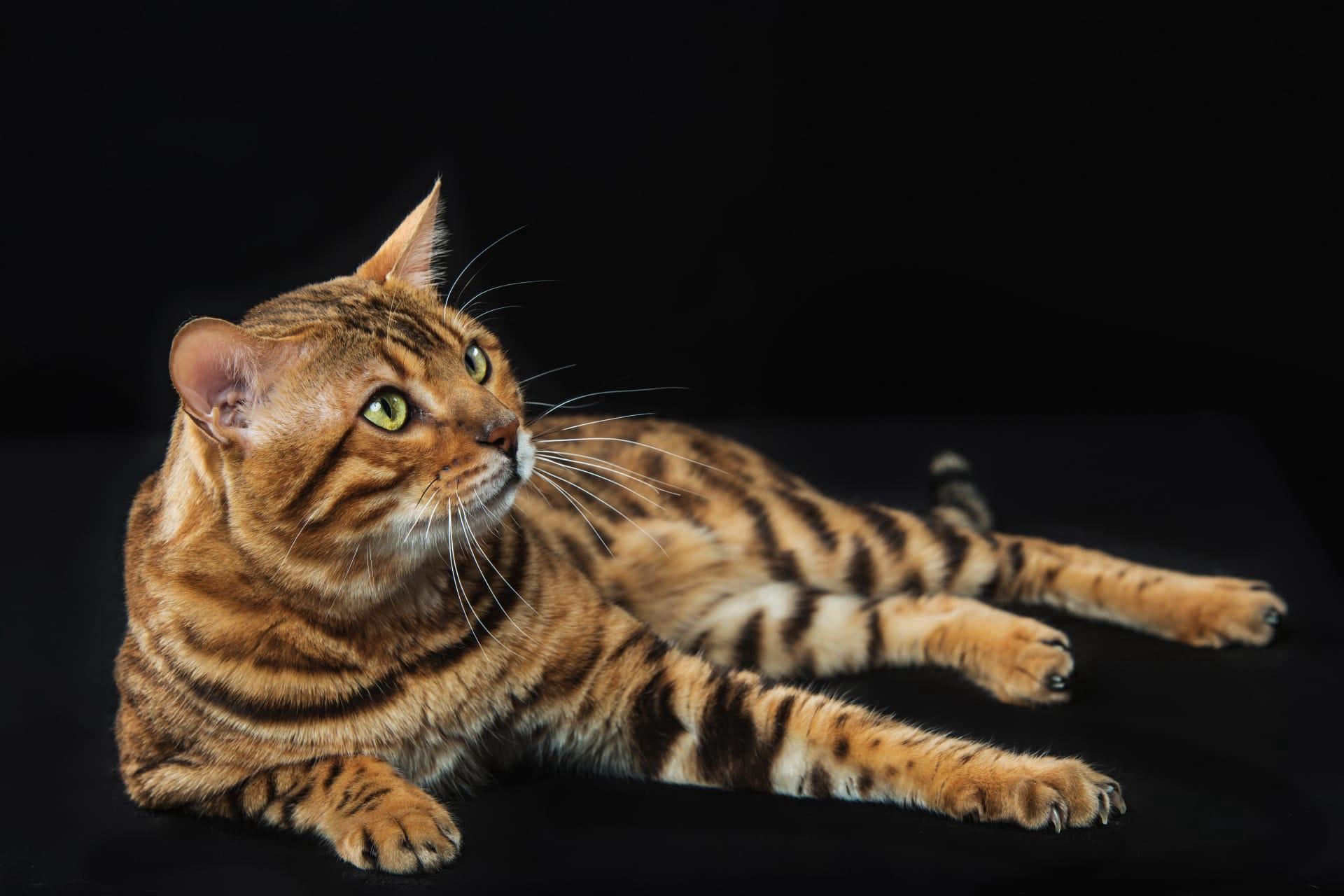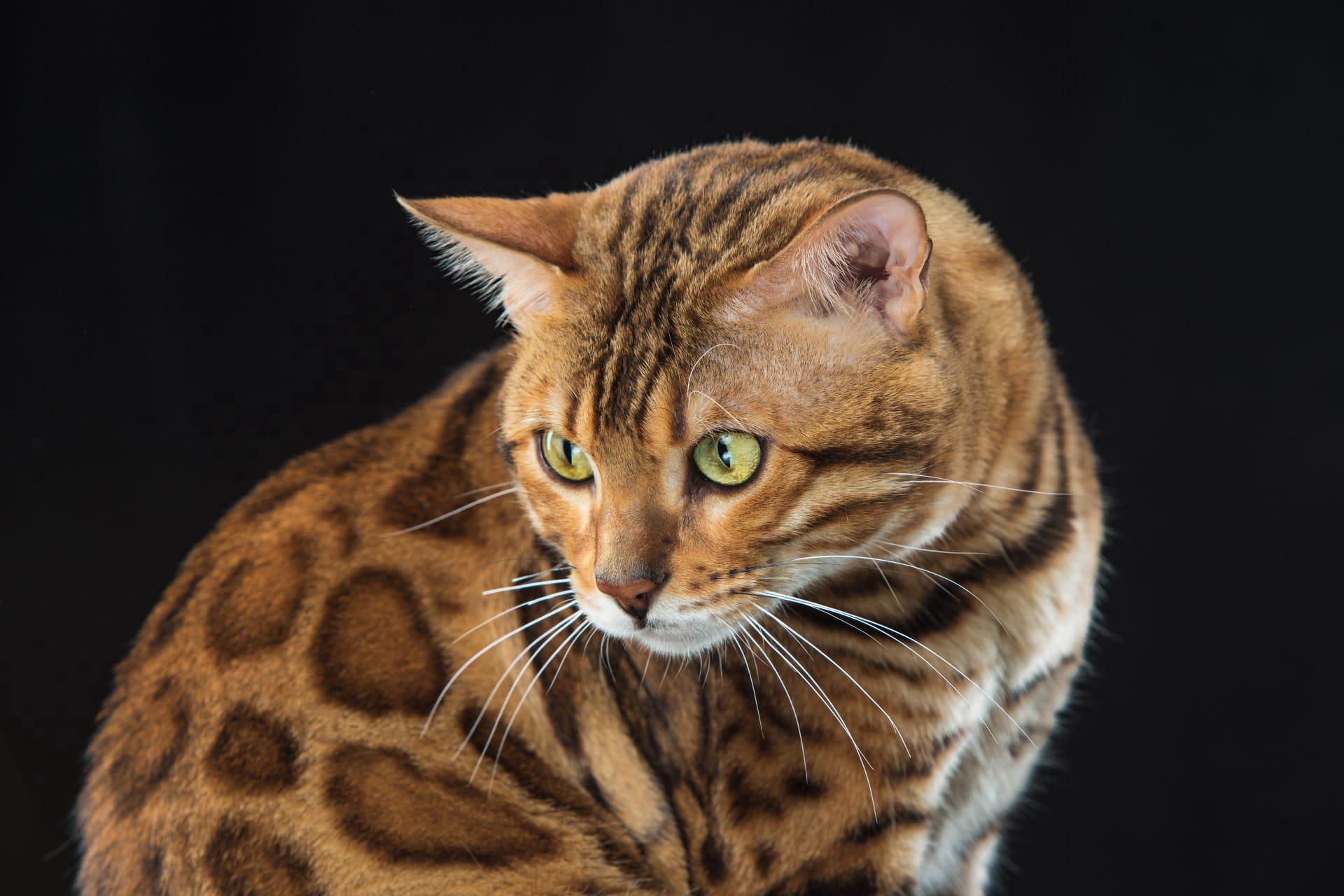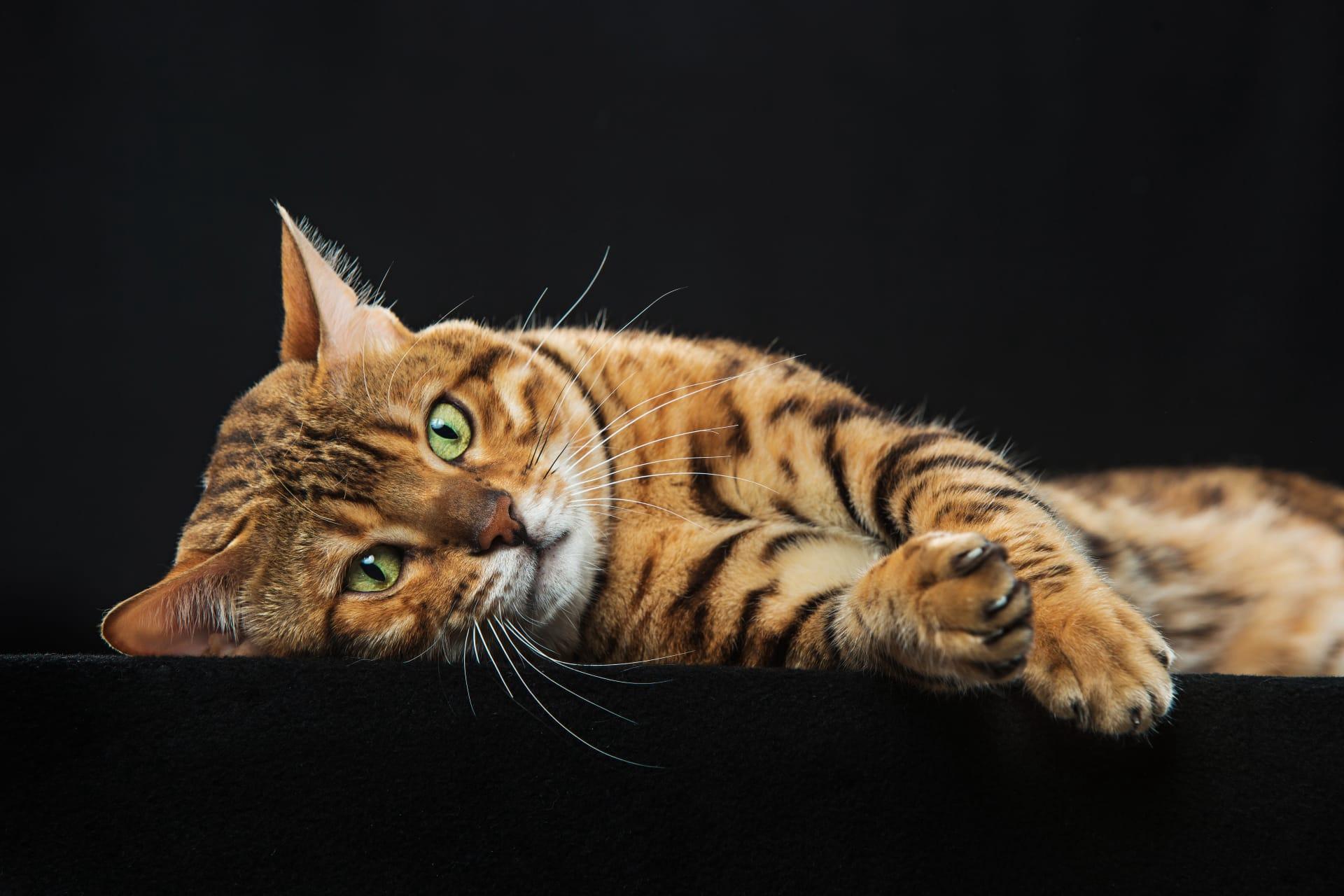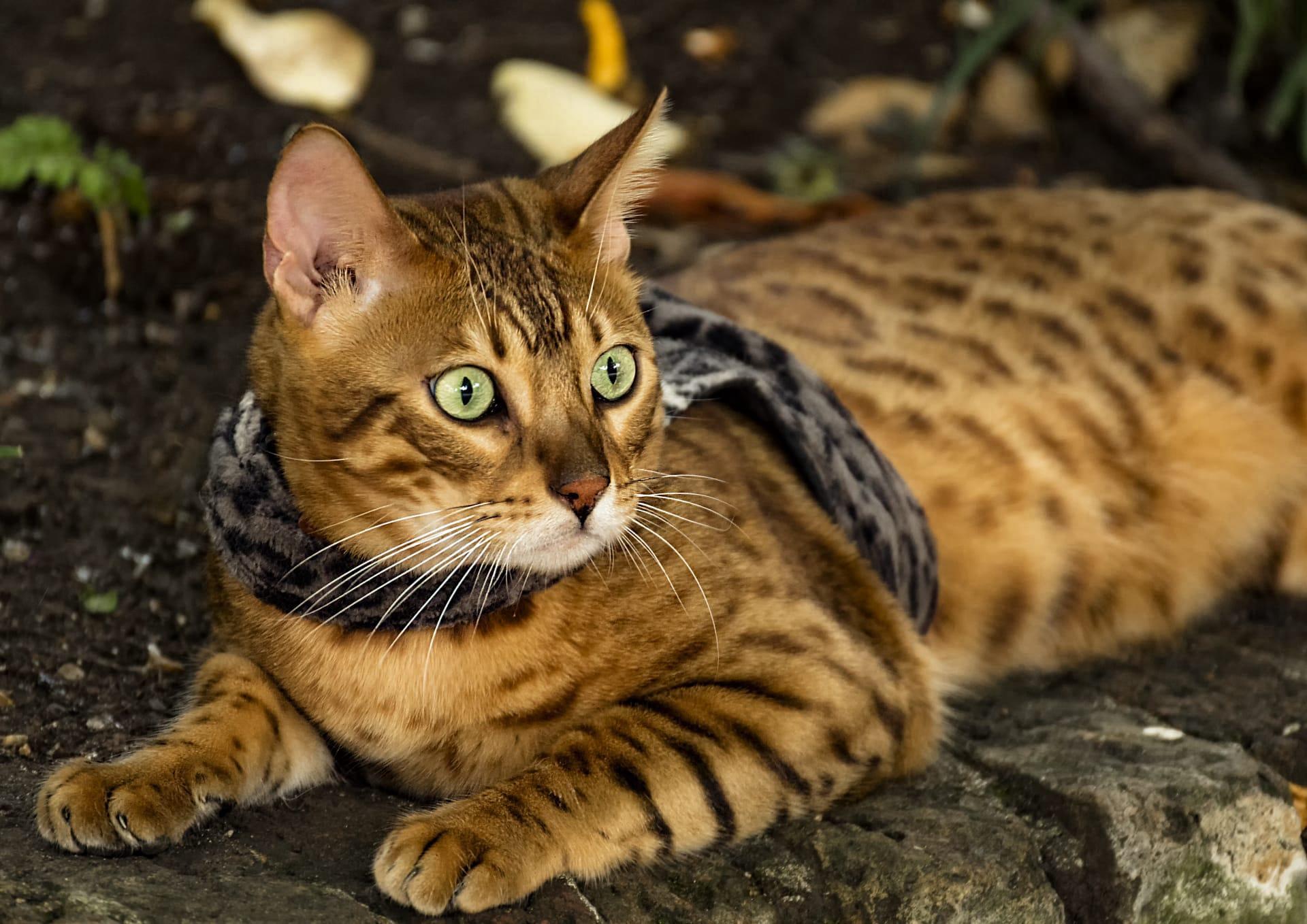Bengal Cat Trivia
- Home /
- Trivia Question /
- Animal /
- Bengal Cat Trivia
1
Question: What unique physical characteristics define a Bengal cat, and how do they differ from other domestic cats?
Answer: Bengal cats are known for their striking, wild-like appearance, which includes a sleek, muscular body, broad head, and pronounced whisker pads. Their coat is their most distinguishing feature, displaying large spots or rosettes similar to those of a leopard, set against a background color that can range from golden, rust, brown, and orange to sand, buff, or even silver. Unlike the more common tabby patterns found in domestic cats, Bengal cats' coats also have a unique glittering effect, making their fur appear to sparkle in the sunlight. They typically weigh between 8 to 15 pounds (3.6 to 6.8 kilograms), with males being larger than females, and they measure about 13 to 16 inches (33 to 40.6 centimeters) in height.
Question: How did the Bengal cat breed originate, and what was the purpose of its development?
Answer: The Bengal cat breed originated in the United States in the 1960s and 1970s through the crossbreeding of domestic cats, specifically the spotted Egyptian Mau, with the Asian leopard cat (Prionailurus bengalensis). The primary goal of this breeding program, initiated by Jean Mill in the 1960s, was to create a domestic cat with the physical characteristics of the wild Asian leopard cat but with the temperate and friendly nature of a domestic cat. This breeding not only sought to capture the beauty and grace of the wild cats but also to bring attention to their plight in the wild, promoting conservation efforts. Bengals today are several generations removed from their wild ancestors, ensuring they retain the desired aesthetic traits while being suitable and safe as household pets.

2
Question: Is it true that Bengal cats are wilder and more aggressive than other domestic cats?
Answer: This is a common misconception. While Bengal cats are bred from a mix of domestic cats and the Asian leopard cat, they are not wild animals. By the time a Bengal cat is several generations removed from its wild ancestor, it has the temperament of a domestic cat. Bengals are known for their high energy levels, intelligence, and playful nature. They are indeed more active and may require more attention and stimulation than some other breeds, but they are not inherently aggressive. Proper socialization and regular interaction can ensure they are sociable and affectionate members of the family.
Question: Can Bengal cats be kept in an apartment, or do they need outdoor access?
Answer: Bengal cats can thrive in apartments as long as their physical and mental stimulation needs are met. They are highly active and intelligent, requiring plenty of playtime, interactive toys, and engagement to keep them entertained. While they do not necessarily need outdoor access, providing a Bengal with a safe, enclosed outdoor space or cat patio (catio) can allow them to explore safely. However, with or without outdoor access, enrichment like climbing structures, scratching posts, and puzzle feeders are essential to keep a Bengal cat happy and healthy in an apartment setting.

3
Question: What dietary requirements do Bengal cats have, and how do they differ from other cats?
Answer: Bengal cats do not have specific dietary requirements that differ significantly from other domestic cats, but they do best on high-quality cat food rich in protein. Due to their high energy levels and active nature, Bengals may benefit from diets with slightly higher protein content to support their muscle mass and energy needs. It's essential to choose a balanced diet that meets the nutritional guidelines established by veterinarians and animal nutritionists, including a mix of wet and dry food to promote hydration and dental health. Regular consultation with a veterinarian can ensure their diet supports their health and vitality.
Question: How does the Bengal cat's intelligence and trainability compare to other cat breeds?
Answer: Bengal cats are among the most intelligent and trainable domestic cat breeds. Their high intelligence means they are quick learners, capable of learning tricks, walking on a leash, and even playing fetch, much like dogs. This intelligence also means they require mental stimulation to prevent boredom, which can lead to destructive behavior. Bengal cats enjoy interactive toys, puzzle feeders, and games that challenge their minds. Their trainability and intelligence make them excellent companions for owners willing to engage in regular play and training sessions.

4
Question: What health issues are Bengal cats prone to, and how can they be prevented or managed?
Answer: Bengal cats are generally healthy, but like all breeds, they can be prone to certain health issues. These include hypertrophic cardiomyopathy (HCM), a heart disease; progressive retinal atrophy (PRA), which can lead to blindness; and patellar luxation, a condition involving the dislocation of the kneecap. Regular veterinary check-ups can help in early detection and management of these conditions. A healthy diet, regular exercise, and genetic testing (for breeders) can also play crucial roles in preventing these health issues. It's important for potential Bengal cat owners to obtain their cats from reputable breeders who test for these genetic conditions.
Question: How long do Bengal cats typically live, and what factors contribute to their longevity?
Answer: Bengal cats typically have a lifespan of 12 to 16 years, though some can live into their late teens with proper care. Factors contributing to their longevity include genetics, diet, exercise, and regular veterinary care. Providing a balanced diet, keeping them physically active through play and exploration, and maintaining a stress-free environment can significantly impact their overall health and lifespan. Regular veterinary visits for vaccinations, preventative care, and early detection of any health issues are also crucial for a long, healthy life.

5
Question: Are Bengal cats good with children and other pets?
Answer: Bengal cats can be excellent companions for children and other pets, thanks to their playful and social nature. They are energetic and often enjoy being part of interactive play, which can make them great playmates for respectful children. Introductions to other pets should be done gradually and under supervision, especially with dogs or other cats, to ensure compatibility and reduce stress. Socialization from a young age can help Bengal cats adapt well to living with other pets and family members.
Question: Do Bengal cats require a lot of grooming, and what are the best practices?
Answer: Bengal cats have a short, dense coat that requires minimal grooming compared to long-haired breeds. Their fur does a good job of staying clean on its own, so they typically need less frequent baths. Regular brushing, about once a week, can help remove loose fur and distribute natural oils, keeping their coat shiny and healthy. It's also important to keep up with regular nail trimming, ear cleaning, and dental care to maintain overall health. Bengal cats are less prone to matting, but regular grooming sessions are a good opportunity to check for any skin issues or parasites.